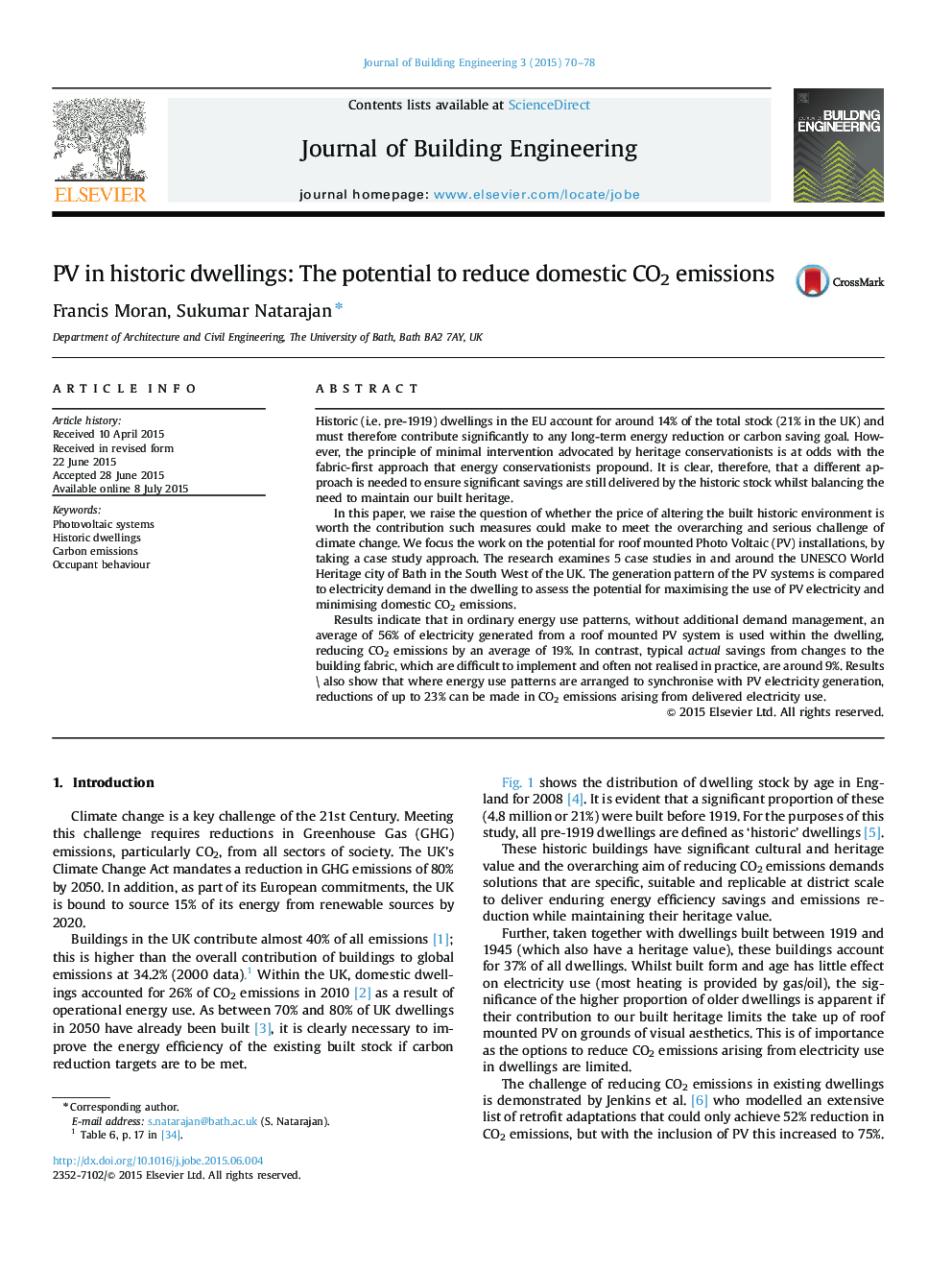| کد مقاله | کد نشریه | سال انتشار | مقاله انگلیسی | نسخه تمام متن |
|---|---|---|---|---|
| 283866 | 509120 | 2015 | 9 صفحه PDF | دانلود رایگان |

• Is it worth altering the built historic environment to mitigating climate change?.
• We examine potential for roof mounted PV by taking a case study approach.
• Results show that an average of 56% of electricity from PV is used within the dwelling.
• This reduces CO2 emissions by an average of 19%. If energy use is synchronised with PV, further 23% savings in CO2 are possible.
Historic (i.e. pre-1919) dwellings in the EU account for around 14% of the total stock (21% in the UK) and must therefore contribute significantly to any long-term energy reduction or carbon saving goal. However, the principle of minimal intervention advocated by heritage conservationists is at odds with the fabric-first approach that energy conservationists propound. It is clear, therefore, that a different approach is needed to ensure significant savings are still delivered by the historic stock whilst balancing the need to maintain our built heritage.In this paper, we raise the question of whether the price of altering the built historic environment is worth the contribution such measures could make to meet the overarching and serious challenge of climate change. We focus the work on the potential for roof mounted Photo Voltaic (PV) installations, by taking a case study approach. The research examines 5 case studies in and around the UNESCO World Heritage city of Bath in the South West of the UK. The generation pattern of the PV systems is compared to electricity demand in the dwelling to assess the potential for maximising the use of PV electricity and minimising domestic CO2 emissions.Results indicate that in ordinary energy use patterns, without additional demand management, an average of 56% of electricity generated from a roof mounted PV system is used within the dwelling, reducing CO2 emissions by an average of 19%. In contrast, typical actual savings from changes to the building fabric, which are difficult to implement and often not realised in practice, are around 9%. Results\ also show that where energy use patterns are arranged to synchronise with PV electricity generation, reductions of up to 23% can be made in CO2 emissions arising from delivered electricity use.
Journal: Journal of Building Engineering - Volume 3, September 2015, Pages 70–78